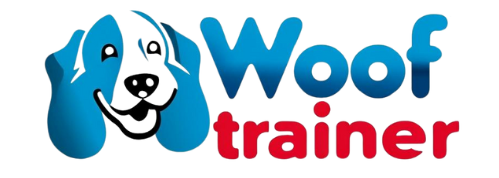If you’re a dog owner ready to buy a stainless steel bowl, you want something safe, durable, easy to clean—and that doesn’t flop over when the pup gets enthusiastic. I’ve surveyed the top brands, specs, user testing, and real-life issues so you can decide smartly—not just by prettiness.
What to Prioritize When Buying
As before, the most critical features are:
- Steel grade / purity — aim for food-grade stainless steel like 304 (also called 18/8), or 316 for extra corrosion resistance.
- Thickness / gauge / weight — thin steel dents, noisy, tips easily; thicker steel holds form, stays stable.
- Size & shape relative to your dog’s muzzle, eating / drinking volume, location (indoors, outdoors, barn).
- Stability / base design — rubber or non-slip rings, wide bottoms, weighted bowls help reduce tipping or sliding.
- Ease of cleaning — smooth interior, no difficult seams or rough edges; dishwasher safe if possible.
Also consider special needs: cold weather (heated or thermal bowls), flat-faced breeds (rounded bowl bottoms), messy eaters (slow-feed or partitioned bowls).
Comparison Table
Here’s a table comparing 5-6 respected stainless steel bowl brands, with their specs, plus pros & cons, so you can see what fits your situation best. At the end is the WoofTrainer to compare.
| Brand | Key Features | Pros | Cons |
|---|---|---|---|
| YETI Boomer 8 | Heavy-duty, double-wall stainless steel, dishwasher safe | Extremely durable, resistant to dents, great for large dogs | Expensive; may be oversized for small breeds |
| Basis Pet Stainless Bowl | Made in USA, food-grade 304 stainless steel | High safety standards, eco-friendly, simple design | Lacks non-slip base; minimalist design not for all |
| Neater Feeder Express | Elevated feeder with spill-proof design | Reduces mess, aids digestion, good for older dogs | Bulky setup; harder to move around |
| PetFusion Premium Bowl | Wide base, silicone non-slip bottom | Stable, prevents tipping, safe for vigorous eaters | Smaller capacity compared to others |
| Durapet Slow Feed Bowl | Built-in ridges for slow feeding | Helps prevent bloating and overeating | Not ideal for dogs that get frustrated easily |
| WoofTrainer Stainless Bowl | Rust-resistant steel, anti-slip base, easy-to-clean design | Balanced option for everyday use; designed with both safety and heavy-duty in mind | Higher price |
How to Pick Based on Your Case
Using the above, here’s how you might decide:
- If you have a large breed dog or multiple animals (or livestock too): Go with something with large capacity, thick steel, rubber base for stability. The WoofTrainer or the K&H Thermal outdoor bowls are strong candidates.
- If cold climate, outdoor dog bowls: Heated / thermal bowls (like K&H) are worth the extra cost to avoid frozen or icy water.
- If flat-faced breeds (Pugs, Bulldogs) or puppies: Look for bowls with rounded bottom interior corners (e.g. Basis Pet), shallow-wide design so they can actually get food/water without straining snout.
- If concern about mess / slipping / speed of eating: Slow-feed designs, non-slip/rubber bases, maybe heavier bowls. Mr. Peanut’s slow-feed, or Bella bowl styles are helpful.
- Indoor use, easy maintenance: Prioritize dishwasher safe, no decorative coatings inside that can peel, avoid thick rubber parts that trap grime.
Putting WoofTrainer in Perspective
While many brands above have strong reputations, WoofTrainer offers something especially worth your attention if your needs align: when you want large capacity, stability, durability, and safety for big dogs or mixed use (dogs + livestock). Because its bowl is:
- built from food-grade 18/8 stainless steel (so matching the better steel grades among competitors),
- large diameter and height (30 cm × 10 cm, ≈ 1.8 gallons),
- rubber ring on base to reduce tipping,
- heavy-duty design that stands up to more abuse outdoors or in farm / yard settings,
It competes well especially against heated/thermal or premium bowls when your priority is “one bowl that handles rough use, large volume, safety, and long life.” But if you only have a toy dog indoors, it may be more bowl than necessary.
What I’d Do If I Were You
If I were you, I’d pick a stainless steel bowl based on:
- Measure your dog’s needs — how much water / food per day, how messy, whether outdoors.
- Steel grade & stable base — never compromise on food-grade steel (304 or better) and non-slip / non-tip base if possible.
- Size vs space — big enough for comfort, small enough that you can clean it and place it somewhere it won’t spill all over.
- Durability vs cost — better steel, better build often saves money long term (replace cheap ones less often).
If you have a large breed, a barn, or use outdoors — then something like WoofTrainer or K&H makes sense. For indoor dogs, something like Basis Pet or Loving Pets may be enough.
FAQ
-
What does “304” or “18/8” stainless steel mean, and is it important?
“304” (aka 18/8) means the steel has about 18% chromium and 8% nickel — that gives it corrosion resistance, food safety, and durability. Yes, it’s important: cheaper stainless steel or non-food-grade materials may corrode, rust, or leach undesirable substances. -
Does a thicker bowl wall always mean better quality?
Not always—but generally yes: thicker steel resists dents, offers better insulation of shape, handles weight and abuse better. But too thick makes the bowl heavy to move and may take longer to dry. -
How do I avoid rust, even with good stainless steel?
Clean daily, avoid harsh chlorine or bleach, avoid leaving standing water too long, avoid steel wool that can scratch the surface, rinse off chemicals. Also ensure drainage so moisture doesn’t stay trapped under rubber bases. -
Is a rubber or silicone non-slip base good or bad?
Good for preventing sliding or tipping. But rubber rings or bases can trap food, moisture, grime; they can degrade with time. Ideally, non-slip features that are removable or designed to avoid trapping dirt are best. -
Do I need a heated or thermal bowl?
Only if you sometimes leave water outdoors in freezing weather or have a dog/barn in cold climates. Otherwise, a regular stainless steel bowl works fine indoors. Heated/thermal models cost more and need power, so weigh whether it’s necessary. -
How often should I replace the stainless steel dog bowl?
With high-quality stainless steel, you might get several years (5-10+) with good care. But replace earlier if dents accumulate, rust appears, or rubber base deteriorates (if it undermines hygiene or stability). -
Are slow-feed stainless steel bowls safe? Do they help prevent issues like bloating?
They can help slow down eating, which might reduce risk of gulping air, digestive upset, and bloat for some dogs. But slow-feed bowls may be harder to clean, and sometimes dogs dislike the shape. Always monitor and check with your vet if your dog is prone to GI issues.

